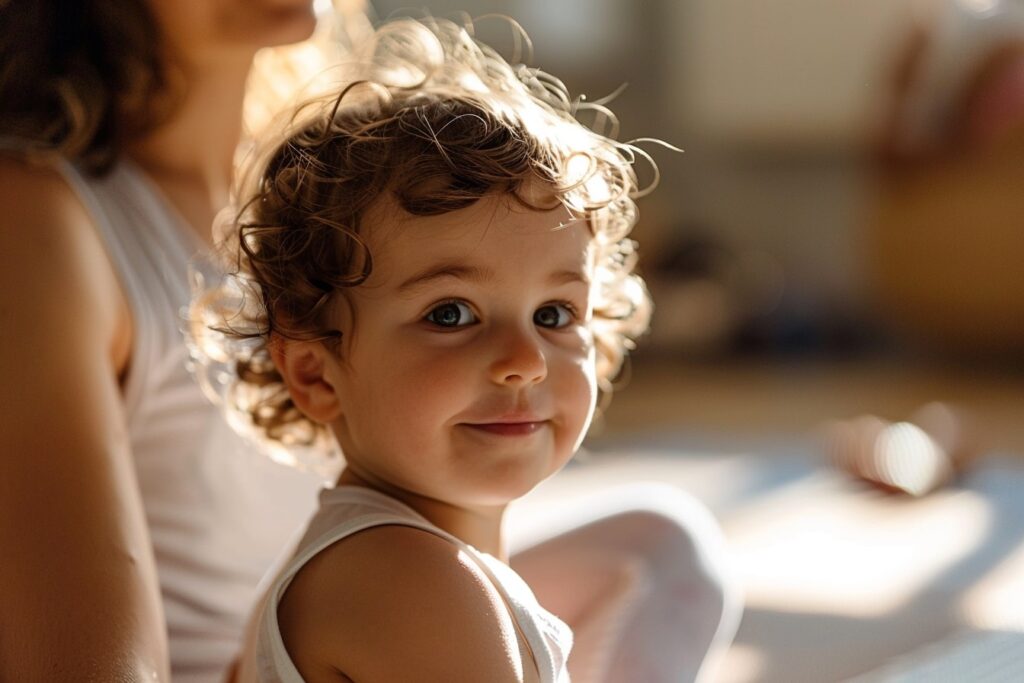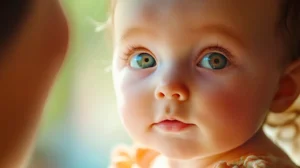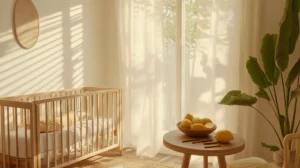Table of Contents
ToggleToddler Yoga: Simple Poses for Mindful Playtime
Picture this: amidst the hustle and bustle of daily life, you find a moment of serenity with your toddler. Together, you embark on a journey of exploration and connection, weaving mindfulness into your playtime routine. This is the essence of toddler yoga – a gentle practice that nourishes both body and soul, enriching the parent-child bond in ways you never imagined.
In today’s fast-paced world, the need for mindfulness has never been greater, even for our little ones. As parents, we strive to provide our children with the tools they need to navigate life’s challenges with grace and resilience. And what better way to start than by introducing them to the ancient practice of yoga?
But why yoga, you may ask? Yoga isn’t just about striking a pose; it’s a holistic practice that encompasses movement, breath, and mindfulness. For toddlers, whose worlds are filled with wonder and curiosity, yoga offers a gateway to self-discovery and emotional regulation. Through simple poses and playful movements, toddlers learn to connect with their bodies, calm their minds, and embrace the present moment.
And let’s not forget the cultural richness that yoga brings to the table. In the vibrant tapestry of Caribbean culture, yoga finds its place as a source of inspiration and healing. From the rhythmic flow of the ocean to the gentle sway of palm trees, Caribbean life is infused with a sense of tranquility that lends itself beautifully to the practice of yoga.
So, what can you expect from this journey into toddler yoga? In this article, we’ll explore the myriad benefits of yoga for toddlers and introduce you to simple poses that you can incorporate into your child’s playtime routine. Get ready to embark on a voyage of discovery, as we unlock the secrets of mindful playtime and foster a deeper connection with our little ones.
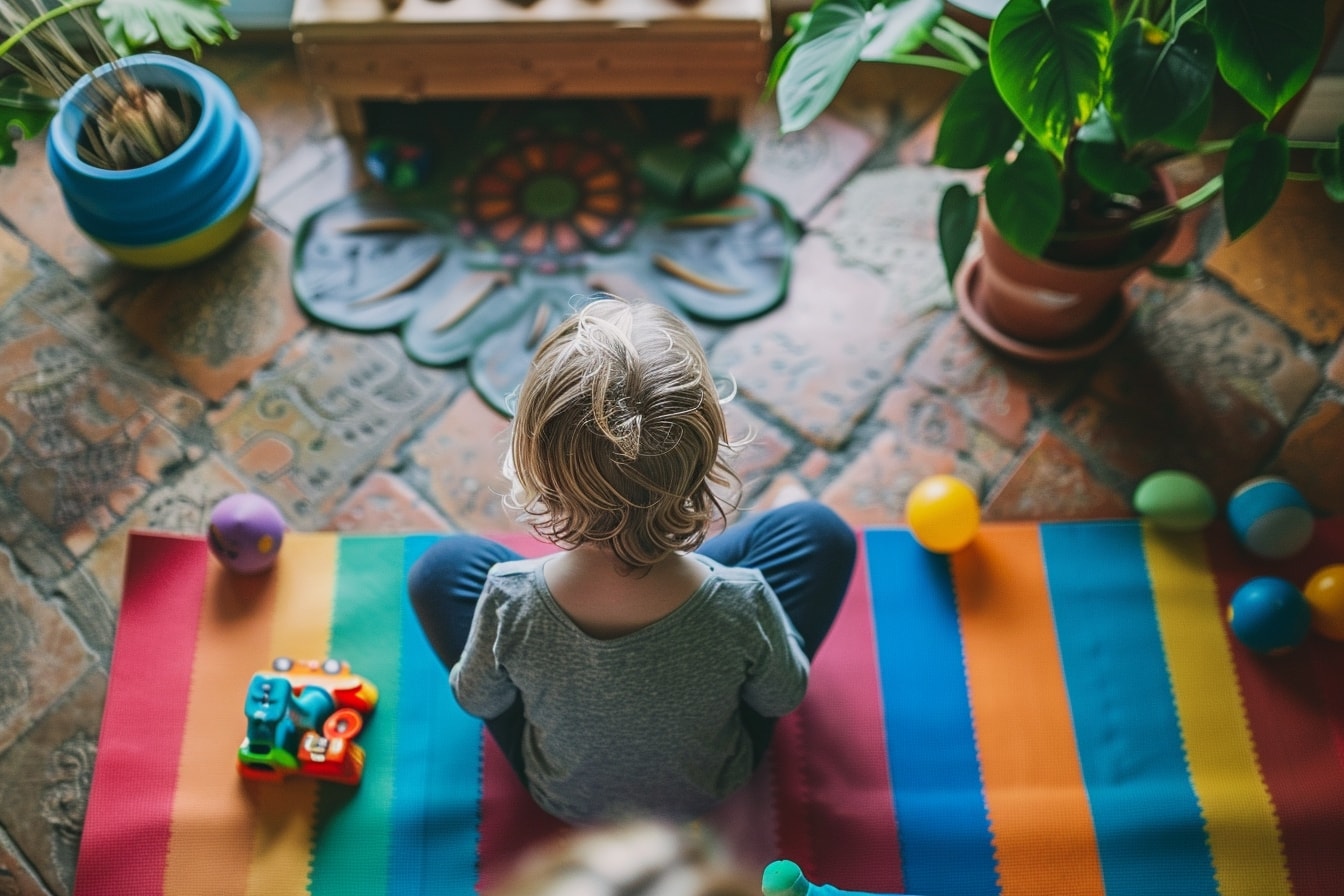
Exploring the World of Toddler Yoga
Welcome to the enchanting realm of toddler yoga, where every movement is a dance of discovery and every breath is a sigh of contentment. In this section, we’ll embark on a journey into the heart of yoga for toddlers, exploring its myriad benefits and uncovering the magic that lies within.
Picture a group of toddlers gathered in a circle, giggling and wobbling as they attempt their first downward dog. It’s a scene straight out of a storybook, but it’s also a snapshot of the real-life joy and wonder that toddler yoga brings to families around the world.
But what exactly is toddler yoga, you may wonder? At its core, toddler yoga is a gentle practice that combines movement, breath, and mindfulness in a way that’s accessible and engaging for young children. From simple stretches to playful poses, toddlers are invited to explore their bodies and express themselves freely, all while cultivating a sense of calm and inner peace.
And the benefits of toddler yoga extend far beyond the physical realm. Research has shown that yoga can help toddlers develop essential life skills such as self-regulation, concentration, and emotional resilience. By encouraging mindfulness and self-awareness, yoga lays the foundation for healthy habits that will serve children well throughout their lives.
But perhaps the greatest gift of toddler yoga is the opportunity for connection – both with ourselves and with our little ones. As parents, we lead by example, showing our children the importance of self-care and self-compassion. Through shared laughter and shared breath, we forge bonds that transcend words, creating memories that will last a lifetime.
So, whether you’re a seasoned yogi or a complete novice, I invite you to join me on this journey into the world of toddler yoga. Together, we’ll discover the joy of movement, the power of breath, and the beauty of presence. Get ready to embark on an adventure of the heart, as we unlock the secrets of mindful playtime and embrace the magic of yoga with our little ones.
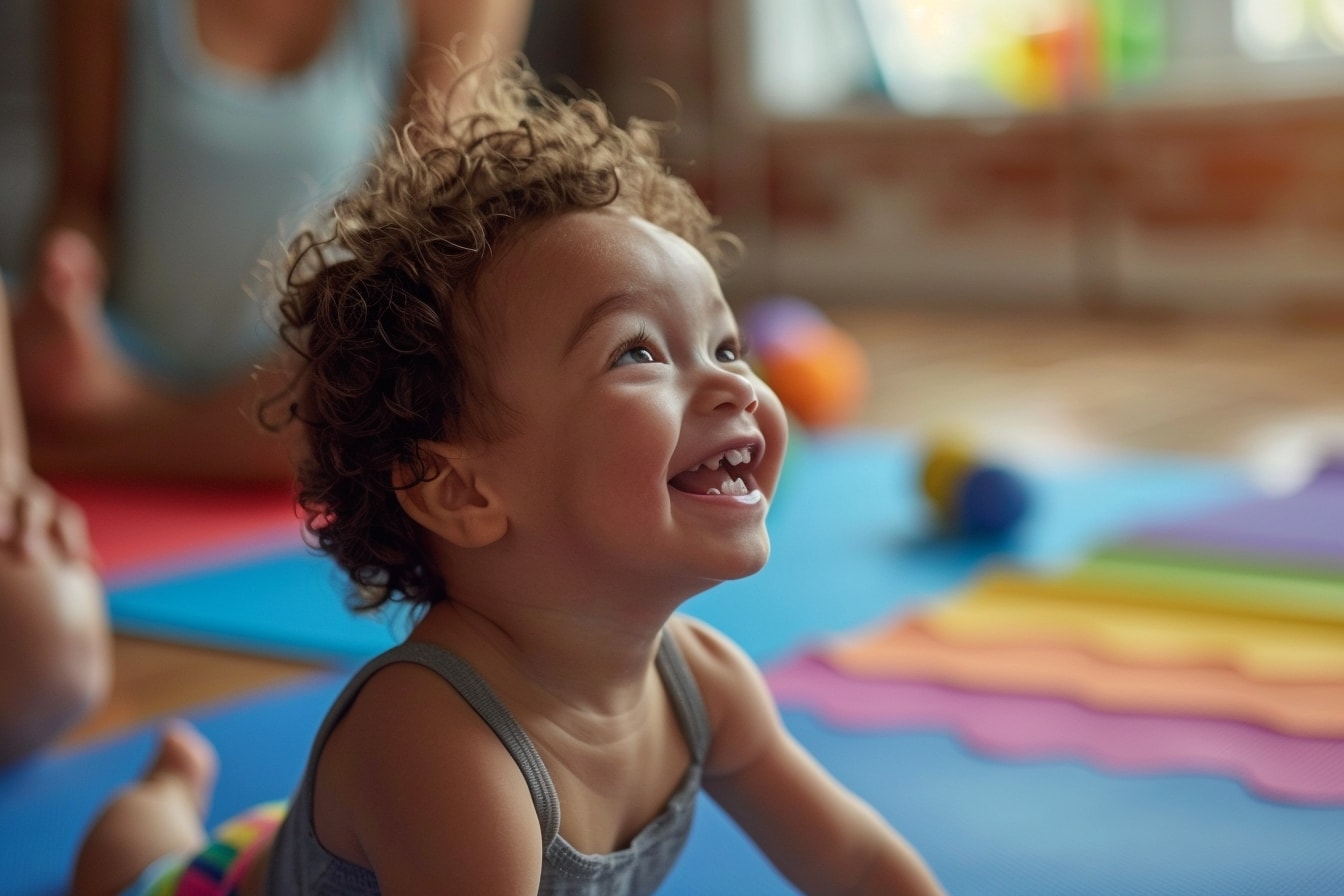
Discovering the Playful Poses
Step into the magical world of toddler yoga, where every pose is an adventure waiting to unfold. In this section, we’ll dive deeper into the playful poses that make yoga fun and accessible for young children, unlocking the secrets of movement, imagination, and creativity.
As you introduce your child to the world of yoga, it’s important to keep things light and playful. Think of yoga as a journey of exploration, rather than a destination to be reached. Encourage your child to move freely and express themselves in whatever way feels natural, embracing the joy and spontaneity of the practice.
So, what are some of the playful poses that you can explore with your toddler? Let’s start with the basics:
- Tree Pose: Stand tall with your feet rooted firmly on the ground, arms reaching up towards the sky like branches swaying in the breeze. Encourage your child to imagine themselves as a tree, strong and steady amidst the chaos of the world.
- Downward Dog: Get down on all fours, with your hands and feet planted firmly on the ground. Lift your hips towards the sky, creating an inverted V shape with your body. This pose is great for stretching the spine and building strength in the arms and legs.
- Butterfly Pose: Sit on the floor with the soles of your feet pressed together, knees bent out to the sides. Gently flap your knees up and down, like the wings of a butterfly. This pose is perfect for opening up the hips and stretching the inner thighs.
But don’t be afraid to get creative and invent your own poses! Encourage your child to use their imagination and come up with poses that reflect their unique personality and interests. Whether they’re pretending to be a roaring lion or a graceful swan, the possibilities are endless.
As you explore these playful poses together, remember to focus on the journey rather than the destination. Celebrate each small victory and embrace the moments of silliness and laughter. By making yoga a fun and enjoyable experience, you’ll not only instill a love of movement in your child but also create lasting memories that you’ll cherish for years to come.
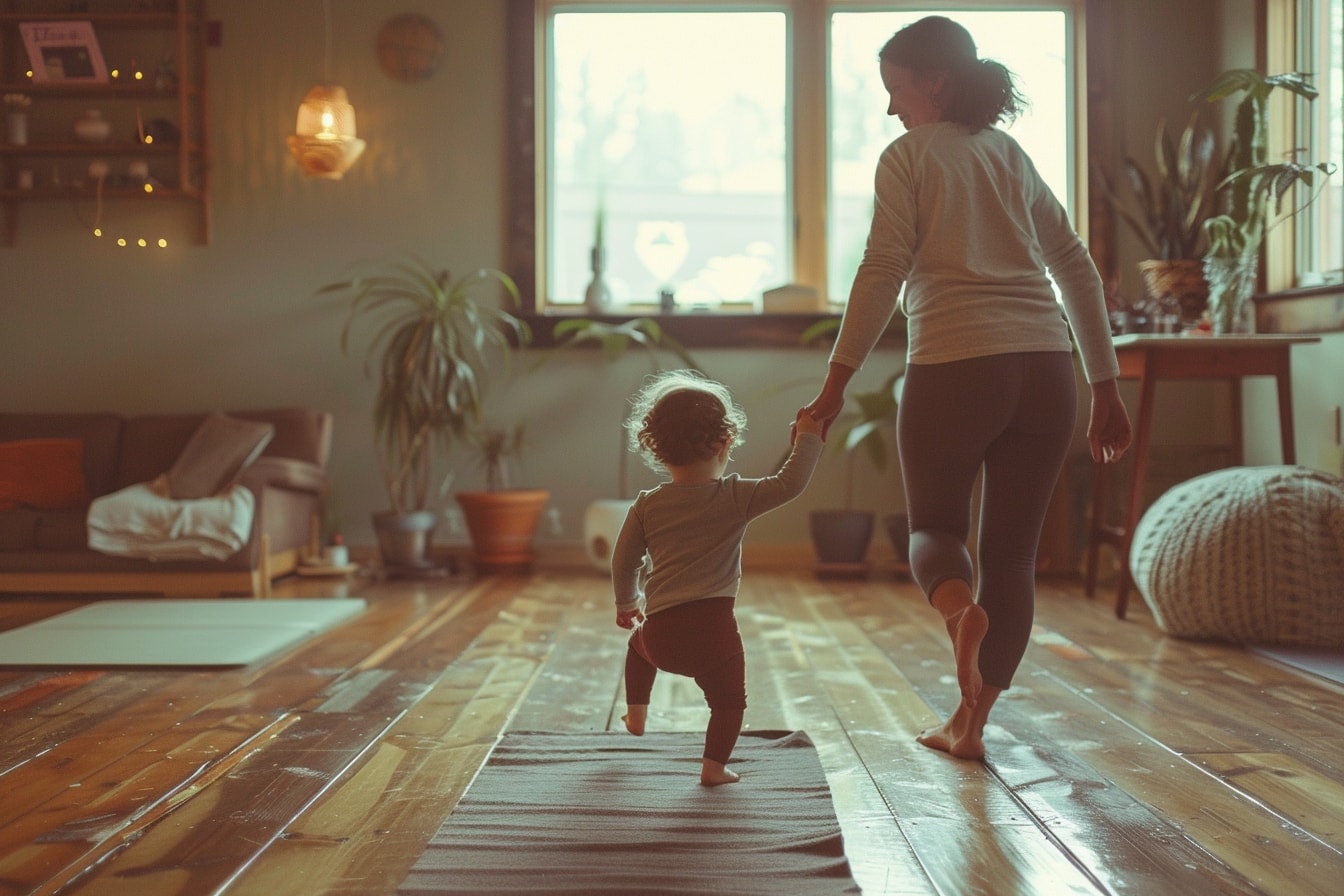
Creating Connection Through Movement
Imagine a world where movement is more than just physical exercise – it’s a language of love, spoken between parent and child. In this section, we’ll explore the profound connection that can be forged through the simple act of moving together, as we dive into the heart of partner poses for parent and toddler.
As parents, we often find ourselves caught up in the whirlwind of daily life, rushing from one task to the next with little time for meaningful connection. But amidst the chaos, there lies a golden opportunity to slow down and connect with our children in a deeper way. Partner poses offer a unique chance to bond with our toddlers through shared movement and shared breath, fostering trust, communication, and intimacy.
So, what are partner poses, you may ask? Partner poses are yoga poses that require two people to work together in harmony, supporting and balancing each other as they move through the practice. For parent and toddler, partner poses can be a fun and playful way to explore the joys of yoga together, while also strengthening the parent-child bond.
One of the simplest and most delightful partner poses is the Parent-Child Boat Pose. Sit facing each other with your legs extended and feet touching, holding hands for support. Slowly lean back, keeping your backs straight and your hearts open, until you find a comfortable balance point. This pose not only strengthens the core muscles but also fosters trust and connection between parent and child.
Another fun partner pose to try is the Parent-Child Tree Pose. Stand side by side with your child, each placing one foot on the inside of the other’s thigh. Hold hands for support and gently sway together, like the branches of a tree in the breeze. This pose encourages balance, coordination, and cooperation, as you move in sync with your child.
But the beauty of partner poses lies not just in the physical benefits, but also in the emotional connection that they cultivate. As you move and breathe together, you create a sacred space of trust and acceptance, where love flows freely between parent and child. In this space, words are unnecessary, as your bodies speak the language of the heart.
So, the next time you’re looking for a meaningful way to connect with your toddler, why not give partner poses a try? Whether you’re laughing together in Boat Pose or swaying gently in Tree Pose, you’ll create memories that will last a lifetime, as you journey together on the path of love and connection.

Growing Strong and Balanced
As parents, we all want our children to grow up healthy, strong, and confident. In this section, we’ll explore how yoga can help toddlers develop the physical skills they need to thrive, as we dive into a world of poses designed to build strength, balance, and coordination.
Yoga is not just about striking a pose; it’s a holistic practice that engages the body, mind, and spirit. For toddlers, whose bodies are still growing and developing, yoga offers a gentle yet effective way to build strength and flexibility, while also promoting balance and coordination.
One of the key benefits of yoga for toddlers is its focus on functional movement patterns – the kinds of movements that are essential for everyday activities like walking, running, and playing. By practicing yoga poses that mimic these natural movements, toddlers can develop the strength and stability they need to navigate the world with confidence.
So, what are some yoga poses that can help toddlers grow strong and balanced? Let’s explore a few:
- Warrior Pose: Stand with your feet wide apart, arms extended out to the sides. Bend your front knee and sink down into a lunge, while keeping your back leg straight and strong. This pose builds strength in the legs and core, while also promoting balance and stability.
- Chair Pose: Stand tall with your feet together, arms reaching up towards the sky. Bend your knees and sink your hips back, as if you’re sitting in an imaginary chair. This pose strengthens the legs, glutes, and core, while also improving balance and posture.
- Bridge Pose: Lie on your back with your knees bent and feet hip-width apart. Press into your feet and lift your hips towards the sky, creating a bridge shape with your body. This pose strengthens the legs, glutes, and lower back, while also opening up the chest and shoulders.
But yoga isn’t just about building physical strength – it’s also about fostering a sense of inner balance and harmony. Through breath awareness and mindful movement, toddlers learn to connect with their bodies and move with intention and purpose.
So, the next time you’re looking for a fun and engaging way to help your toddler grow strong and balanced, why not give yoga a try? Whether you’re striking a pose in Warrior Pose or sinking into Chair Pose, you’ll be laying the foundation for a lifetime of health and wellness, as you journey together on the path of yoga.
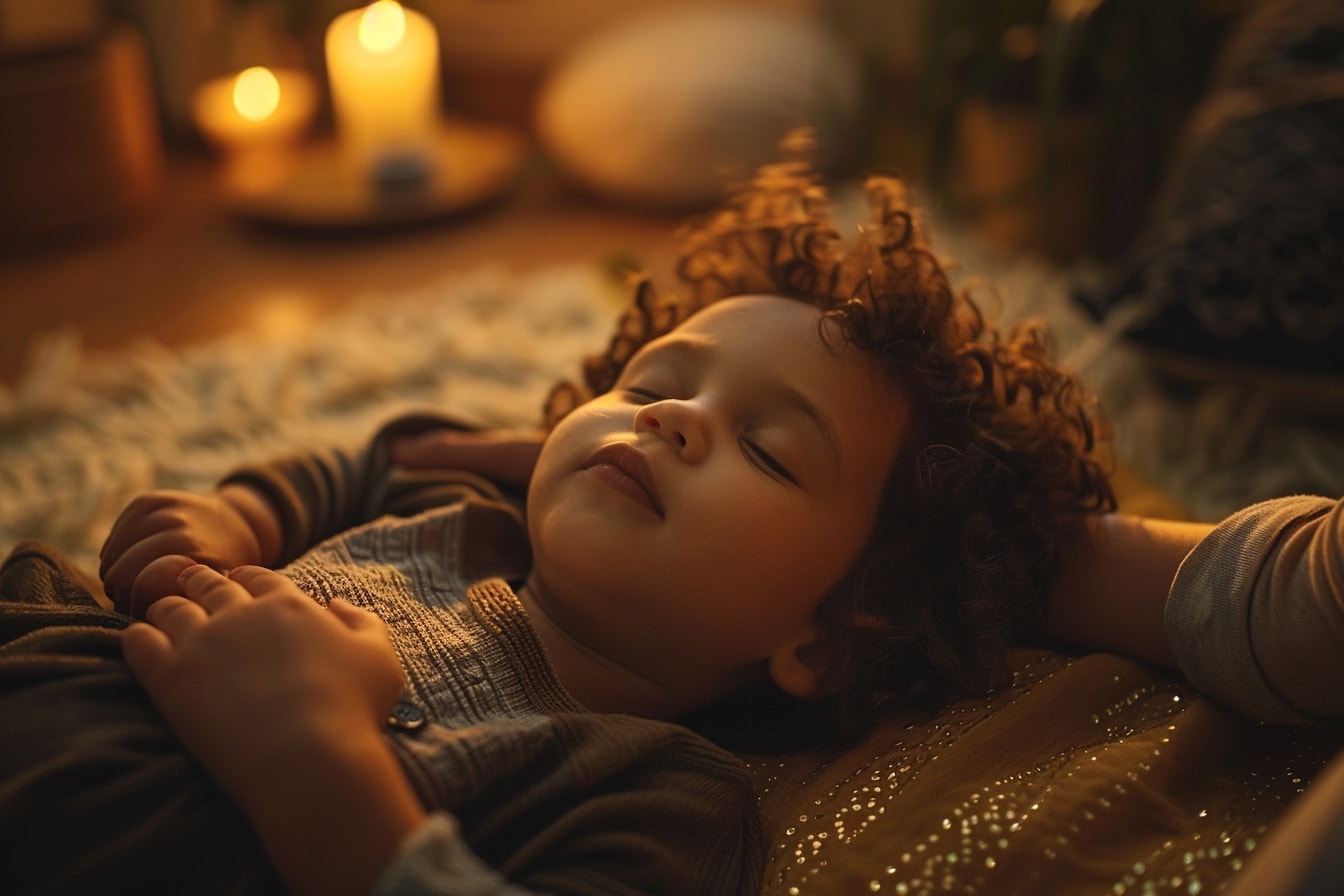
Nurturing Mindfulness and Relaxation
Amidst the hustle and bustle of modern life, finding moments of peace and tranquility can feel like a rare luxury. But for parents and toddlers alike, cultivating a sense of mindfulness and relaxation is essential for overall well-being. In this section, we’ll explore how yoga can serve as a powerful tool for nurturing mindfulness and fostering a sense of calm amidst the chaos.
At its core, yoga is a practice of presence – a journey inward that invites us to connect with the present moment and cultivate a sense of inner peace. For toddlers, whose minds are constantly buzzing with curiosity and excitement, yoga offers a sanctuary of stillness amidst the noise.
One of the key benefits of yoga for toddlers is its ability to promote relaxation and stress relief. Through gentle movements, deep breathing, and guided relaxation techniques, toddlers learn to release tension and unwind, allowing their bodies and minds to rest and recharge.
So, what are some yoga poses that can help toddlers cultivate mindfulness and relaxation? Let’s explore a few:
- Child’s Pose: Kneel on the floor with your big toes touching and knees wide apart. Sit back on your heels and fold forward, resting your forehead on the ground and extending your arms out in front of you. This pose gently stretches the back, hips, and shoulders, while also promoting a sense of surrender and release.
- Seated Forward Bend: Sit on the floor with your legs extended in front of you. Inhale to lengthen your spine, then exhale to fold forward from the hips, reaching towards your toes. This pose stretches the hamstrings and lower back, while also calming the mind and promoting relaxation.
- Corpse Pose: Lie on your back with your arms by your sides and legs extended comfortably. Close your eyes and take slow, deep breaths, allowing your body to sink into the ground beneath you. This pose is a classic relaxation pose that helps release tension and promote deep rest.
But yoga isn’t just about the poses – it’s also about the practice of mindfulness, or the art of paying attention to the present moment with openness and curiosity. Through simple mindfulness exercises such as breath awareness and body scanning, toddlers learn to cultivate a sense of inner calm and self-awareness.
So, the next time you’re looking for a way to help your toddler unwind and relax, why not incorporate some yoga into your daily routine? Whether you’re sinking into Child’s Pose or finding stillness in Corpse Pose, you’ll be creating a sacred space of peace and tranquility where your child can rest and recharge, ready to face whatever life throws their way.
As our journey through the world of toddler yoga draws to a close, let’s take a moment to reflect on the transformative power of this ancient practice. From the playful poses that bring joy and laughter to the partner poses that forge bonds of love and connection, yoga has the ability to enrich our lives in countless ways.
Throughout this article, we’ve explored the myriad benefits of toddler yoga, from physical strength and flexibility to emotional regulation and mindfulness. We’ve learned how yoga can help our children grow strong and balanced, both in body and in spirit, laying the foundation for a lifetime of health and well-being.
But perhaps the greatest gift of toddler yoga is the opportunity for connection – with ourselves, with our children, and with the world around us. Through shared breath and shared movement, we create moments of intimacy and presence that transcend words, weaving a tapestry of love and understanding that binds us together as a family.
So, as we bid farewell to this exploration of toddler yoga, let us carry with us the lessons learned and the memories made. Let us continue to nurture mindfulness and relaxation in our daily lives, embracing the beauty of the present moment with open hearts and open minds.
And most importantly, let us never forget the magic that lies within – the spark of joy and wonder that lights up our children’s eyes as they discover the joy of yoga for themselves. For in the end, it is not the poses or the postures that matter, but the love and connection that we share with our little ones, as we journey together on the path of parenthood.
So, here’s to the beauty of toddler yoga – may it continue to inspire and uplift us, now and always.
Want to take your knowledge to the next level? Check out these must-read articles:
- Gardening with Toddlers: Planting Seeds of Curiosity
- DIY Toddler Games: Creating Educational Playtime
Organize your baby’s wardrobe with our baby clothes closet organizer products! Our organizers are designed specifically for baby clothes. Get your baby’s clothes neat and tidy with our selection of organizers – shop now!
Step into Sue Brown's World of Baby Care, where you'll find a treasure trove of knowledge and wisdom waiting to be explored. Sue's dedication to providing accurate and up-to-date information on baby care shines through in every article, blog post, and resource she shares. From newborn essentials to sleep training tips, breastfeeding advice to nurturing your baby's development, Sue covers a wide range of topics that are essential for every parent to know. Her warm and compassionate approach creates a sense of community and reassurance, making her website a safe haven for parents seeking guidance and support. Let Sue Brown be your partner in this beautiful journey of parenthood, as she empowers you to create a loving, nurturing, and thriving environment for your little one.
- Indoor Air Quality for Infant Respiratory Health - October 20, 2025
- Positive Discipline Foundations: Setting the Stage From Infancy - October 18, 2025
- 2025’s Most Innovative Baby Products Worth the Investment - October 16, 2025

